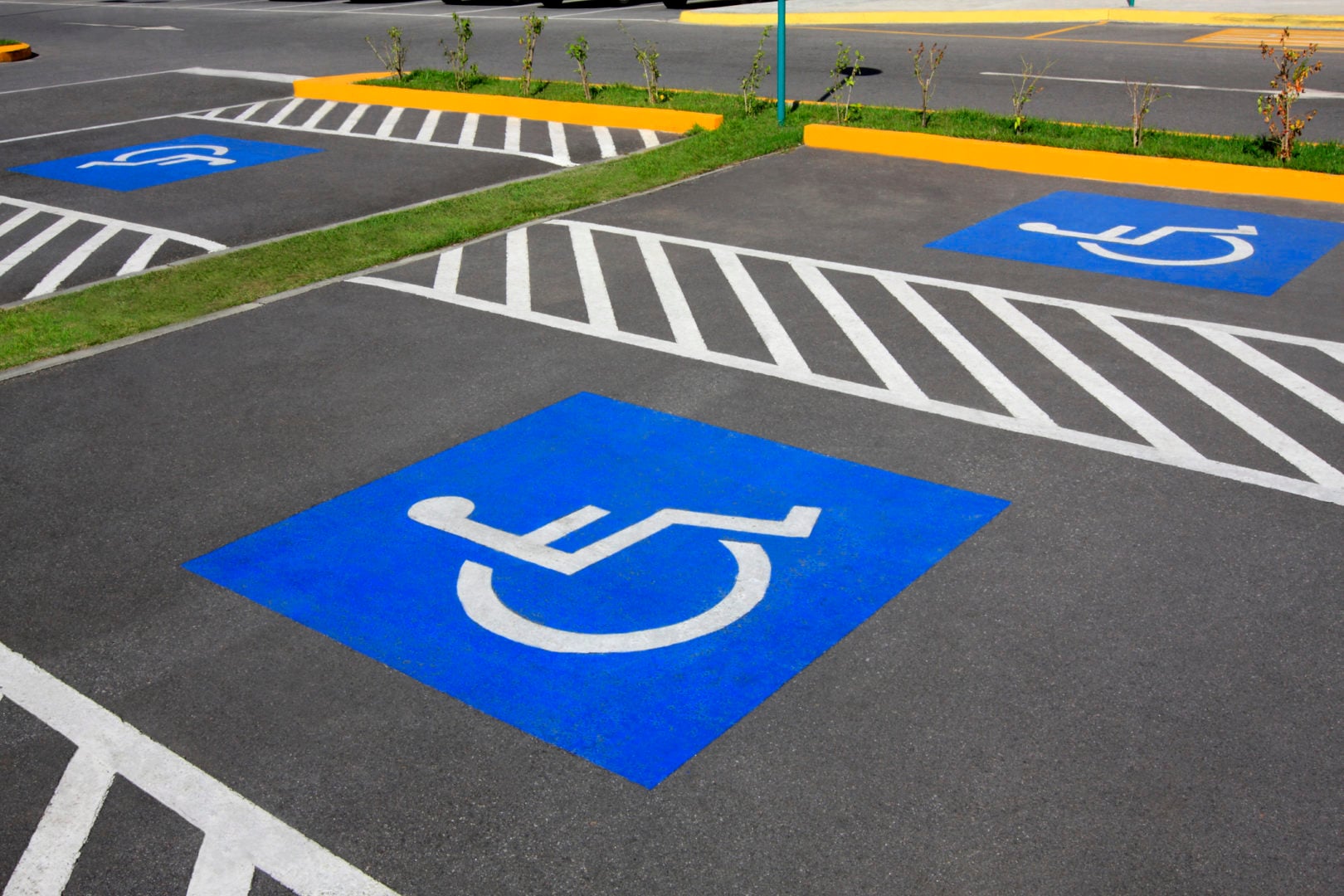If you have a short-term or long-term disability that impairs your mobility or requires you to use a cane, wheelchair, walker or other device to get around, you might be eligible for a handicapped parking permit.
Rules vary state to state, but regardless of the type of permit you get, they allow your vehicle to park in handicapped-designated parking spots, giving you a much shorter walk to your destination.
States offer both temporary and permanent permits depending on your disability. Most come in the form of a placard that is hung from your rearview mirror, while some states have the option of getting a handicap sticker that goes on your license plate. Some states also allow you to obtain permanent handicap license plates that can be used instead.
Interested in getting a handicap sticker for you or your loved one? Here’s a step-by-step guide on how to obtain a handicapped parking permit for your car.
Key takeaways
- If you have a disability that affects your mobility, you may be eligible for a temporary or permanent handicapped parking permit, which allows access to designated parking spots and other privileges.
- Each state has its own rules for eligibility, types of permits and the application process, which often requires a doctor’s certification.
- Once obtained, it’s important to follow your state’s guidelines for proper use, renewal and display of the permit to avoid penalties.
1. Check if you’re eligible
While eligibility regulations vary by state and city, handicap parking permits can be obtained for a wide variety of health conditions. For example, you may be entitled to one if you use portable oxygen, have a serious lung or heart condition, experience vision issues or blindness, can’t walk 200 feet without stopping or can’t walk without assistance. You might also be eligible for a temporary permit if you’ve just had a major surgery or if you’re pregnant and dealing with complications that affect your mobility. However, in some states, like Delaware, you can get a handicap permit without a documented medical condition if you’re 80 or older.
Click on your state at the bottom of this article to find out more about the requirements in your area.
2. Know your options
There are different types of handicap permits available depending on your state and your disability. Many states offer temporary or short-term permits that are valid for up to six months, in addition to permanent permits. Despite the name, permanent handicap parking permits typically expire after several years and must be renewed.
For example, in California, permanent placards expire after two years, whereas in Oklahoma, they are good for five years, and in Nevada, they don’t expire for 10 years.
If you have a permanent disability, some states also offer license plates with permanent handicapped symbols on them that you can use instead of a placard or handicap sticker.
If you’re a veteran with a service-connected disability, you may also be eligible for a disabled veteran permit. The fees are often waived for these types of permits.
3. Get an application
Check out the website for your local DMV or other government body that issues driving permits in your area. (In some areas, it’s a taxation or revenue office.) Read up on the rules regarding available handicapped driving permits, any associated fees and what’s required in the application process. Some allow you to complete the form online, while others require you to print out an application and mail it or fill one out at your local office.
4. Talk to a doctor
In most cases, in order to qualify for a handicap permit, you must get your doctor to sign your application or submit a note to certify that it’s medically necessary. As soon as you think you or a loved one might benefit from a handicap sticker, make a doctor’s appointment to discuss your eligibility.
Depending on your disability, you may need to meet with a medical doctor, osteopath, podiatrist, chiropractor, optometrist, registered nurse, etc.; check your state’s rules to see if there are restrictions on the type of medical professional. Speak candidly with your doctor and discuss how this permit might help you and your family. If you’re eligible, the medical professional will fill out the application you printed out or provide a note saying why you need the permit.
5. Submit your permit application
Usually, the disabled person must apply for the handicap permit themselves, either online, through the mail or in person, though some states allow someone else to apply on their behalf.
It can take about a month to process a permit application and receive relevant handicap stickers, placards or plates. Plan accordingly, especially if you know ahead of time that you might need a temporary tag for a scheduled surgery. Keep in mind that if you’re not a disabled veteran, some states charge a small fee for handicap permits. Some states will allow you to get two placards, while others limit you to just one.
6. Know how to use the permit properly
There’s a problem with handicapped parking fraud, so there are strict guidelines on how handicapped parking permits can be used. Once you receive your permit, read your state’s rules carefully to avoid getting fined or having your permit confiscated.
Make sure you are clear on:
What areas or spots you can park in
If you get any special parking privileges besides handicap-designated spots (for example, some states allow you to park in any public metered spot for free)
If there are rules about whom your car must be registered under
If the permit-holder has to be in the car
If the permit is good for traveling in other states
If you need to carry an identification card (for example, California gives you a placard identification card that you must have in your possession whenever you’re using the permit)
7. Renew your permit
Don’t forget that in most states, even permanent handicap stickers need to be renewed every few years. Find out what is required to renew yours.
Permits have varying expiration dates, and the renewal process can differ depending on whether you have a permanent or temporary permit and whether it’s in the form of a sticker, placard or license plate. Some handicap permits automatically renew, while others require you to apply for renewal. Additionally, some types require you to get recertified by a medical professional in order to renew it, while others don’t. Read up on the renewal requirements for your state so you’re prepared.
8. Get a handicapped parking sign
If there is no handicapped parking available near your home, some cities and states allow you to apply to have a handicap spot added in a residential area near you. In some cases, they will add a handicapped parking spot that anyone with a permit can use; in others, it will be reserved for you. Check with your city or town’s disability commission or department of motor vehicles for more information.
9. Learn the rules in your state
Tired of hearing “it depends where you live”? Click on the link for your state below to see your government’s guidelines and/or application information for obtaining a handicap sticker, placard or license.
Getting a handicapped parking permit does require some research, time and effort. But if your mobility is severely impaired, the benefits of having a handicap sticker can absolutely be worth the trouble.





